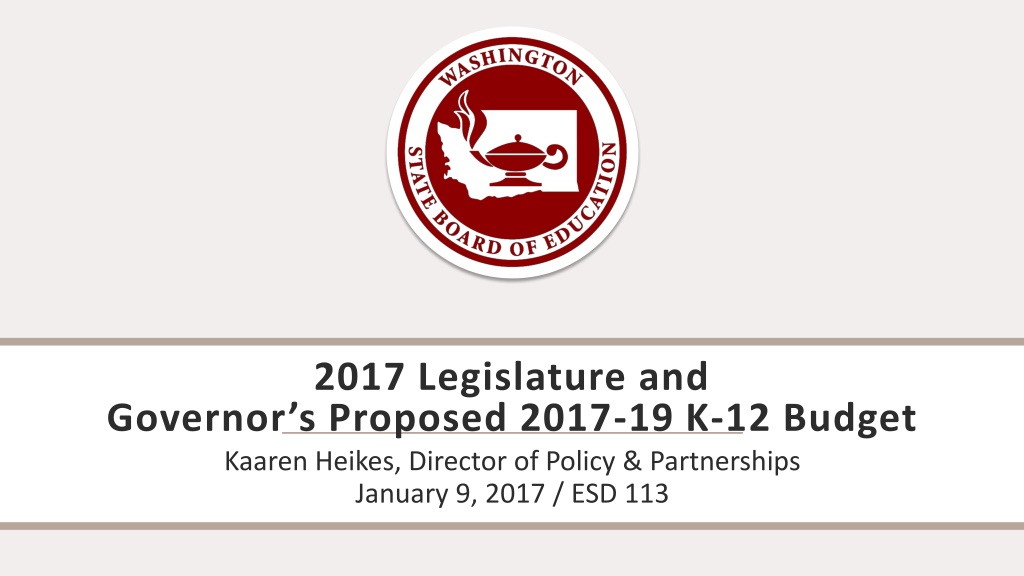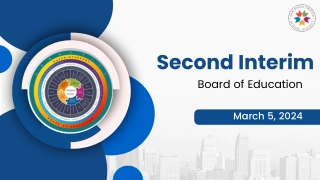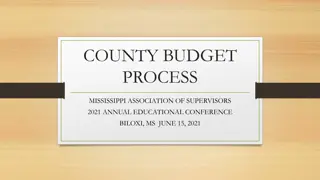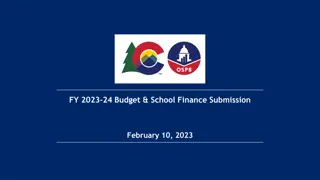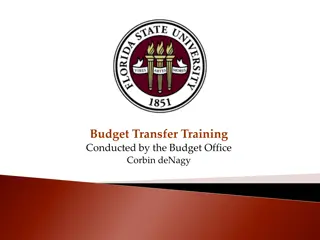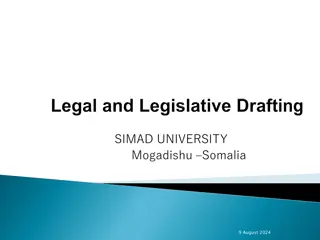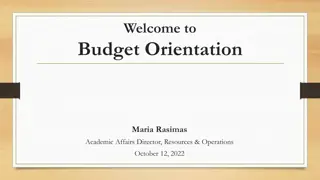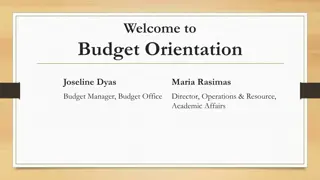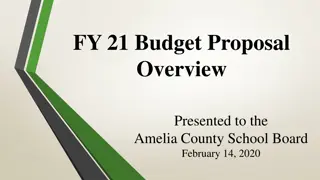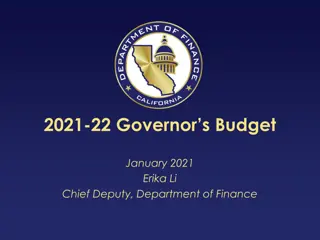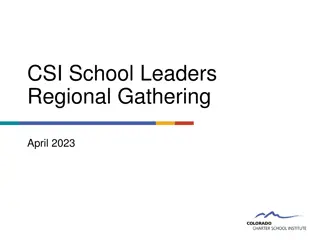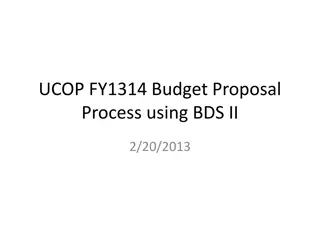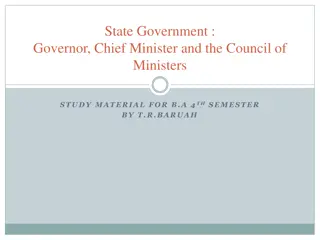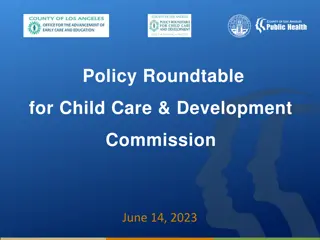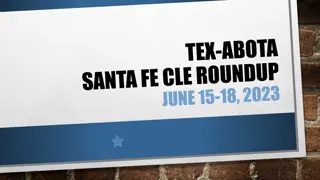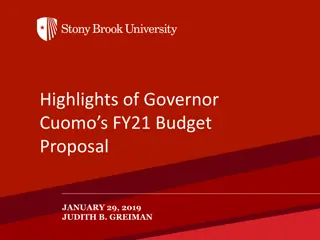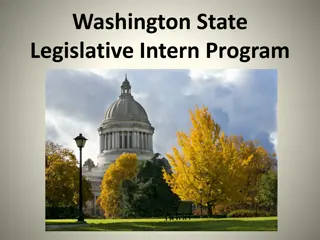Legislative Updates and Governor's 2017-19 K-12 Budget Proposal
Since adopting its 2017 legislative priorities, significant progress has been made, including finalizing election results, establishing legislative chambers' organization, releasing Governor Inslee's proposed K-12 budget, and holding meetings with key stakeholders. The Washington 2017 Legislature has convened with new members in both House and Senate. Legislative leadership and key committees have been identified, meeting schedules set, and key legislative session bill cutoff dates scheduled.
Download Presentation

Please find below an Image/Link to download the presentation.
The content on the website is provided AS IS for your information and personal use only. It may not be sold, licensed, or shared on other websites without obtaining consent from the author. Download presentation by click this link. If you encounter any issues during the download, it is possible that the publisher has removed the file from their server.
E N D
Presentation Transcript
2017 Legislature and Governor s Proposed 2017-19 K-12 Budget Kaaren Heikes, Director of Policy & Partnerships January 9, 2017 / ESD 113
What has transpired since the Board adopted its 2017 legislative priorities? Election results were finalized Legislative chambers have established their organization (leadership and committees) Governor Inslee has released his proposed K-12 budget for the 2017-19 biennium The Education Funding Task Force has held several meetings and concluded Key K-12 stakeholder groups have circulated their 2017 legislative agendas SBE staff have had many meetings with Legislators, the Governor s staff, and key stakeholders to collaborate, stay informed, and move your legislative priorities forward The Washington 2017 Legislature has convened, committees have met, etc. 2
Legislative Election Results House of Representatives 14/98 new members in the House (14% new) 50 Democrats 48 Republicans Senate 8/49 new members in the Senate (16% new) 25 in Republican Caucus 24 in Democratic Caucus 3
Legislative Leadership and Key Committees Leadership, Education and $ Committees (pp 4-6 in PDF) Senate: Page 42 in packet House: Pages 43-44 in packet Do you live in any of the legislative districts of legislators in leadership positions or on key committees? Do you know any of legislators in leadership position or on key committees? Or do you know someone who has relationship/influence with one? 4
2017 Session Bill Cutoffs Key dates: February 17 - Policy Committee Cutoff February 24 Fiscal Committee Cutoff March 8 House of Origin Cutoff March 29 Policy Committee Cutoff (opposite Chamber) April 4 Fiscal Committee Cutoff (opposite Chamber) April 12 Opposite Chamber Cutoff 2017 Session Cutoff Calendar 6
Governors Proposed K-12 Budget Each year, by law, the Governor is required to submit budget proposals (Operating Budget, Capital Construction Budget, and Transportation Budget) to the Legislature by December 20th. Governor Inslee released his proposed 2017-19 biennial budget over the course of a week in mid-December. His K-12 budget debuted first, a $3.85 billion K-12 funding package along with a revenue package to fund it. The Governor s K-12 education budget is entitled Putting Washington s Students First. 7
Governors 2017-2019 budget: Fundamental Goals Fully fund K-12 schools in next biennium Solve fundamental state budget challenge Increase school funding in all districts; honor local control and decision making Launch major overhaul of mental health system Continue efforts to prevent and reduce homelessness Continue progress on clean energy, environment Preserve safety net for vital services We cannot cut our way to success to meet major challenges Source: OFM 8
Putting Washingtons Students First Three major areas, or planks: 1. Recruit, Retain, and Continuously Train Great Educators ($2.96 billion) 2. Close the Opportunity Gap ($865.8 million) 3. Engage Students ($26.1 million) 9
Summary of Governor s Proposed K-12 Budget WA STEM is matching this $10 million 10
Teacher Compensation Model (Governor) SALARY ALLOCATION MODEL FOR SCHOOL YEAR 2018-19 Current Beginning Educator Salary is $35,700. Governor proposes increasing it to $44,976 in 2017-18 and $54,587 in 2018-19 (50% increase over the biennium). Smaller increases for 2nd tier certification and 2nd tier & 10+ years experience. 11
Administrator and Classified Compensation Model (Governor) Classified staff: 18% increase in 2017-18, 54% increase (from current) in 2018-19 Administrators: 25% increase in 2017-18, 180% increase (from current) in 2018-29 12
Governors Proposed K-12 Budget Addresses court order to fully, sustainably fund basic education $2.7 billion to pay state s full share of teacher compensation Includes salary increase for beginning teachers Every district will receive more money from state Local school taxes reduced by at least $250 million per year No increase in state property tax Alleviates decades-long funding disparities among districts Budget includes another $1 billion to: Continue shrinking early elementary class sizes Boost teacher mentoring and other proven strategies Address opportunity gaps Source: OFM 13
What about local levies? Governor s budget proposes maintaining current law for CY 2018: Local levy authority is set to decrease from 28% to 24%; LEA (Local Effort Assistance) is 12% Grandfathered levy rates would remain in place Ghost money in the levy base is eliminated 15
Governors budget proposal for CY (levies) Levy authority drops down to 15%; lower percentage, but the base on which that percentage is calculated is much, much higher. Some districts will see a rollback of levy authority; all districts experience a net gain in resources from the combination of new state dollars and levy authority. 119 SDs will see a local property tax decrease (75% of households and businesses), $250m state-wide tax decrease. 50% match for LEA (Local Effort Assistance), no grandfathering, no ghost money (because base has ample funding). 2019 plan is intended to make levy cliff discussion moot (per OFM staff) 16
Additional Education Investments Pre- and Post- K-12 $42m builds on recent historic investments in early childhood education: Funds 2,700 more ECEAP slots Increases ECEAP rates by more than 6% Higher education costs remain significant burden for middle-class students and families. The governor s budget: Freezes tuition for next two years, offsets costs to colleges and universities Includes $146 million for financial aid to 14,000 more students Source: OFM 17
Revenue side of the equation Governor Inslee s proposed budget also includes a revenue enhancement proposal that would increase revenues by: Increasing the B&O rate on services (from 1.5% to 2.5%) and extending B&O tax to all services. Implementing a new Carbon Tax Implementing a new Capital Gains Tax Numerous other smaller taxes, including: Applying sales tax to vehicle trade-ins valued over $10,000 Applying real estate excise tax to certain foreclosure sales Repealing sales tax exemption on bottled water Most of these proposed tax changes have been proposed in similar or different form through legislation or initiative over the past four years. 18
Education Funding Task Force Charge: develop recommendations about how to accomplish the remaining steps of fully funding basic education, including educator compensation and revenue sources Met regularly for seven months Extensive data collection, analysis, and review Final meetings January 4th and 9th Democratic Caucus Proposal $7.3 billion over next four years 9 recommendations 19
Education Funding Task Force Republican Caucus Proposal 11 Guiding Principles Of note: Collective Bargaining Reform Clarifying Basic Education vs Enrichment Statewide Health Benefits System for Educators Funding K-12 first 20
Education Funding Task Force No recommendations adopted (all motions failed along party lines) Caucus recommendations likely indicative of proposals and points of tension during session 21
How can SBE Members participate? SBE 2017 Legislative Session Protocol Staff will check daily bill introductions Bills that are relevant to the Board s work will be circulated for staff comment and entered into a Bill Tracking Matrix (example below) Bills will be assigned a status of Priority or Monitoring* Bills will be categorized by area of SBE Work or Legislative Priority Staff will recommend a preliminary position based on alignment with the Board legislative priorities, which will be discussed by the Executive Committee The Bill Tracking Matrix will be discussed at Executive Committee meetings, and updated accordingly. Staff will send the Bill Tracking Matrix to the entire Board once a week, typically on Friday, or as needed; staff will begin including a Bill Status document, as well, once relevant (i.e., after the first policy cut-off in mid-February) Other updates on staff and Board testimony and other topics as needed will be sent out on Friday with the Bill Tracking Matrix. 22
How can SBE Members participate? Advocacy ideas: Personal notes to your Legislators (your residence and place of work) Letters to your Legislators (your residence and place of work) One-on-one meetings with Legislators Advocating in your networking with other stakeholders/influencers 23
